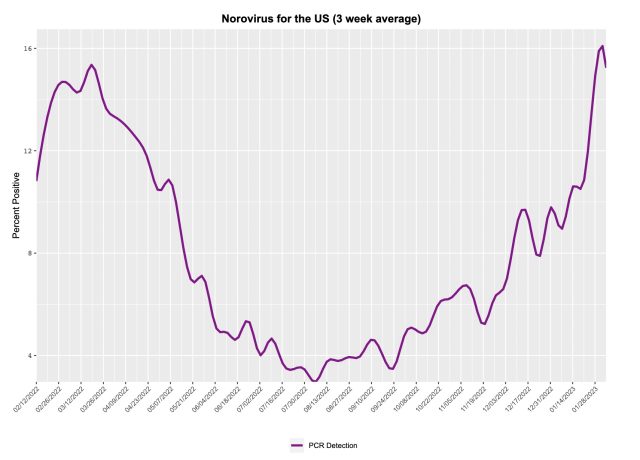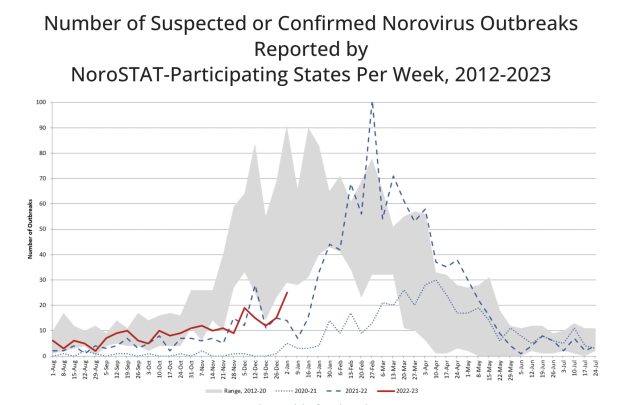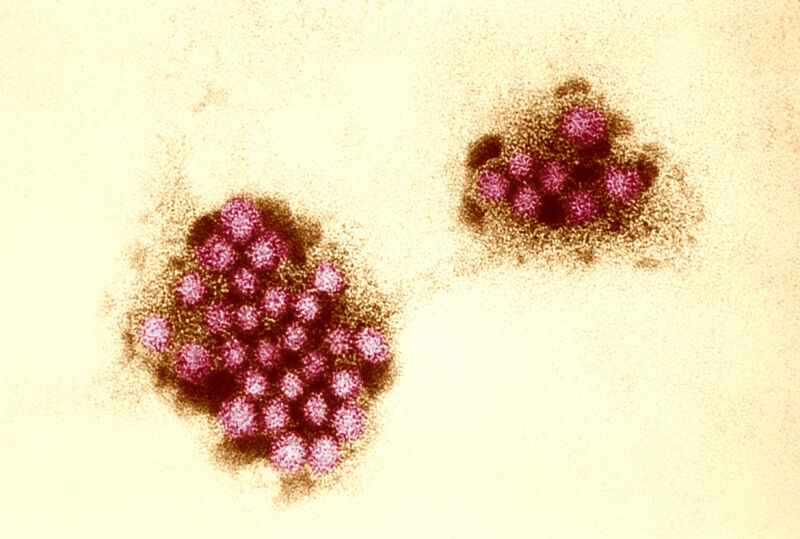While cold-weather waves of flu, RSV, and COVID-19 are on a merciful decline, another common pathogen seems to be having its moment: norovirus.
The percentage of positive norovirus tests at the end of January has surpassed the peak percentage seen last year in March, according to surveillance data collected by the Centers for Disease Control and Prevention. Though the data suggests the virus may have peaked on a national level, regional data shows cases are still floating upward in the Northeast, Midwest, and Western US, with numbers in the South seemingly sinking.

Like many infectious diseases, norovirus cases bottomed out amid the pandemic health restrictions and disruptions. But in 2022, the US saw a resurgence to pre-pandemic levels—and by one metric, surpassed them. The CDC's Norovirus Sentinel Testing and Tracking (NoroSTAT) network, which collects data on norovirus outbreaks from 14 collaborating state health departments, reported that the number of norovirus outbreaks at the end of February 2022 hit a season peak exceeding that of any previous season since surveillance began in 2012.

There's a lag of several weeks for NoroSTAT data this year, with outbreak data only reported to the start of January. The data suggests outbreaks are in a steep incline. But the test positivity data—collected through the CDC's laboratory-based National Respiratory and Enteric Virus Surveillance System (NREVSS)—stretches to the end of January and suggests that this year's load of norovirus cases could be even heftier than last year's. Amid 2022's record outbreaks, test positivity reached a little over 15 percent at its peak. But by the end of January 2023, we have already hit 16.4 percent.
Record or not, that likely means a lot of bathroom misery across the US now and in the coming weeks. Norovirus—politely described as a "stomach bug"—is a highly contagious virus that causes acute gastroenteritis, often leaving victims gutted from violent and frequent vomiting and diarrhea. It can be transmitted directly from infected people and also via surfaces, food, and liquids that have been contaminated. The main prevention method for norovirus transmission is thorough hand washing. And it's important to note that hand sanitizers generally don't work at disarming norovirus.
The CDC estimates that norovirus causes an average of 19 million and 21 million diarrheal and vomiting illnesses each year in the US, sending nearly 1 million children to the doctor's office, hospitalizing over 100,000, and killing 900, mostly people aged 65 and older. Most infections occur between November and April, though the virus can strike anytime during the year.
The latest wave of infectious diseases in the US comes as the country is still grappling with COVID-19 spread while other germs are reestablishing their normal cycles. In the past months, the US saw an unusually early peak of flu and an out-of-sync wave of RSV infections, both of which are now on reassuring declines. COVID-19 also had a relatively mild winter wave but is still causing an average of 450 deaths per day.
Though this winter has been far less deadly than the start of 2022, survey data released Tuesday by the Kaiser Family Foundation found that 38 percent of US adults said that their households were hit by either flu, RSV, or COVID-19.



3175x175(CURRENT).thumb.jpg.b05acc060982b36f5891ba728e6d953c.jpg)


Recommended Comments
Join the conversation
You can post now and register later. If you have an account, sign in now to post with your account.
Note: Your post will require moderator approval before it will be visible.